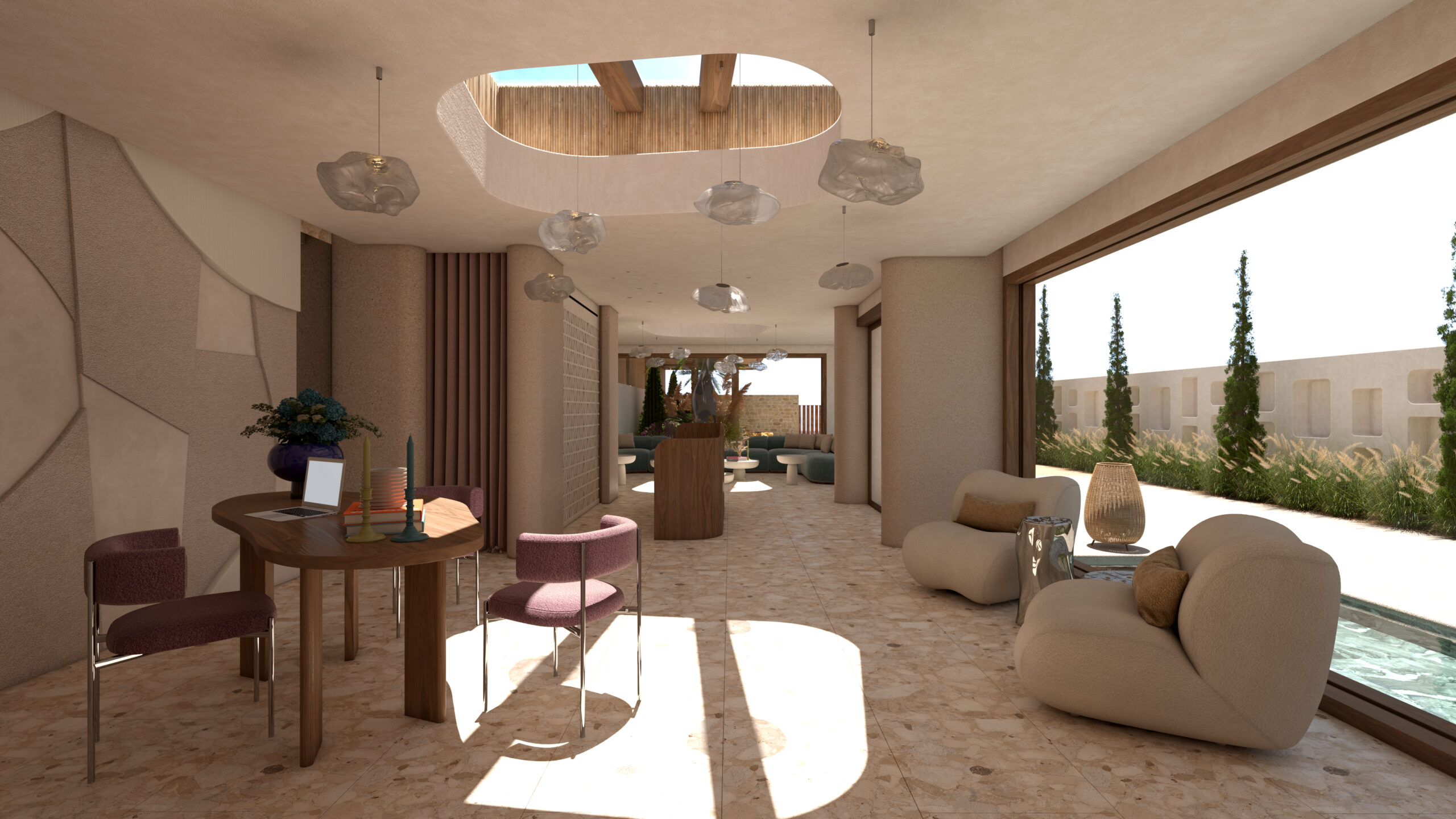Interior Design. The first impression of a hotel is not limited to the reception or the staff, but begins the moment a guest steps into the hotel space and encounters the lobby and common areas. These spaces act as the “introduction” to the experience the hotel promises, which is why their importance is critical. They are not merely functional zones but vibrant environments that shape the brand’s image, set the tone for hospitality, and predispose the guest either positively or negatively.
The Lobby as a First Impression Stage
The lobby is the showcase of the hotel’s philosophy. It is the first space that welcomes the guest and offers a preview of the experience to come. Therefore, it must reflect the identity of the hotel. Whether it conveys luxury, relaxation, modernity, or local character, the architecture and interior design of the lobby deliver the first message: here you will feel comfort, care, and a unique experience.
Comfort and Functionality
A lobby is not just a beautiful space; it must also be functional and practical. The flow of movement should be clear, so the guest never feels lost or disoriented. Comfortable, ergonomic seating in waiting areas provides relaxation, and its thoughtful presence throughout the space enhances the overall experience without becoming monotonous or predictable.
Connection to the Locale
The best lobbies “belong” to their place. The use of local materials, such as stone, wood, marble, or ceramics, adds a sense of authenticity. Local decorative details contribute to a unique identity without falling into folkloric clichés. A view or an opening toward a courtyard, pool, or natural landscape gives the guest the feeling they have arrived somewhere, not anywhere.
Light and Diffusion
Natural light is a valuable element for the space. Large glass surfaces open the lobby to the surrounding environment, while shading systems and semi-outdoor areas help manage light effectively. At night, the atmosphere is shaped through warm, soft lighting tones that convey comfort and intimacy. Lighting is not just a technical matter, it is a storytelling tool for the hospitality experience.
Public and Private Common Areas
The lobby is only the beginning. Common areas extend to lounges, reading corners, seating spaces, and semi-outdoor areas that open the building outward. The thoughtful organization and balance between public and more private zones provide the needed sense of privacy without isolating the guest. The transition between these spaces is an art that requires careful architectural study.
The Lobby as a Social Hub
Today, the modern hotel is not just a place to stay, but also a place for social and professional encounters. The lobby may host bars, cafés, and co-working areas, allowing guests to meet friends, work, or enjoy a drink. The design must support these different uses without creating noise or confusion.
The lobby and common areas are much more than simple passageways. They are the hotel’s first “welcome” and an invitation to a complete hospitality experience. Through thoughtful architectural composition, functionality, and comfort, the guest immediately feels genuine hospitality and attentive care from the very first moment.
